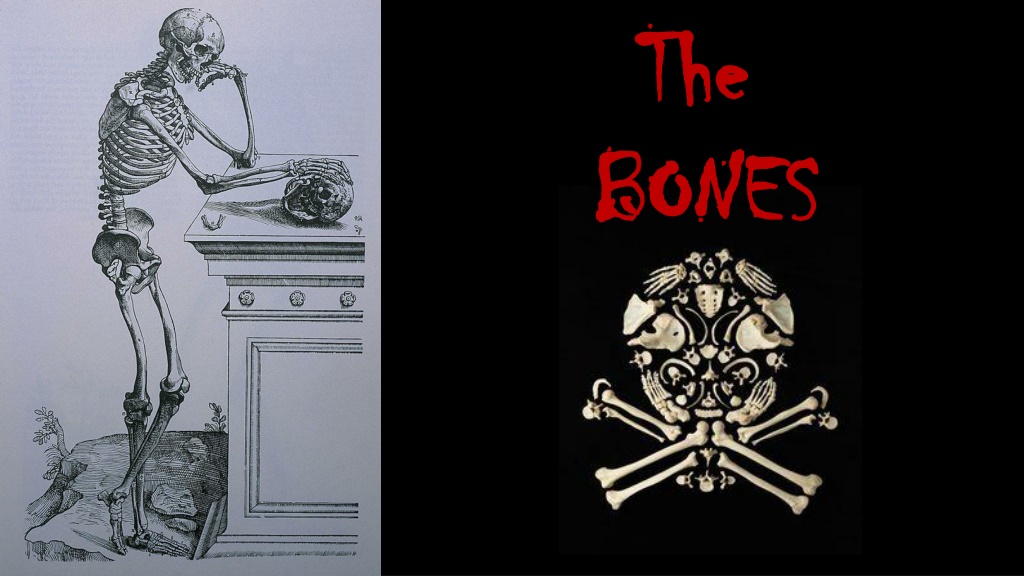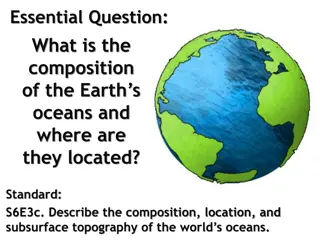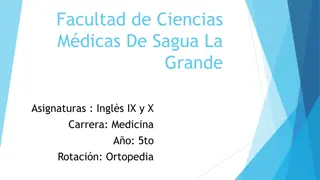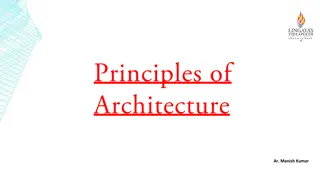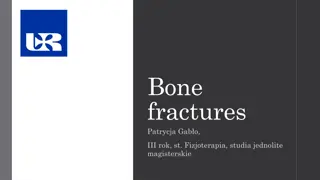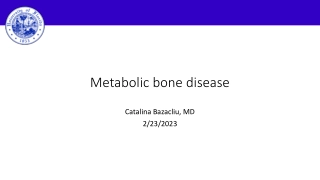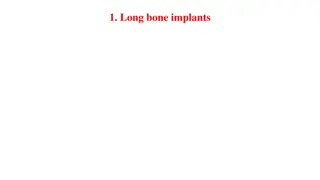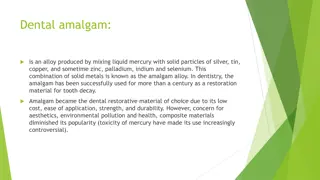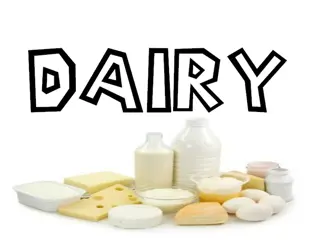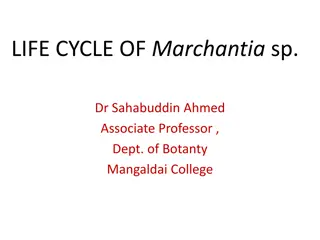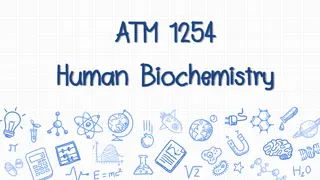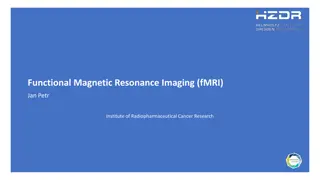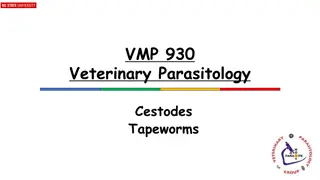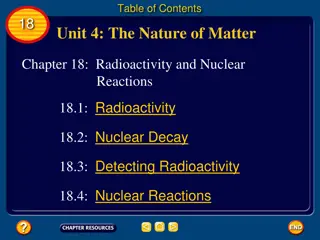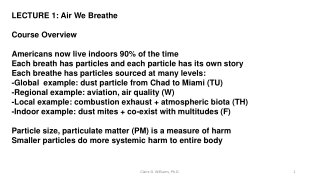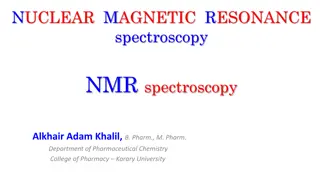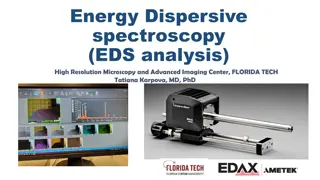Understanding Bone Anatomy and Composition
Explore the intricate details of bone structure and function, from the classification of bones by shape to the constituents of bone tissue. Learn about the essential role bones play in providing structural support, protection, and blood cell production. Delve into the anatomy of long and flat bones, and discover the importance of organic and inorganic components in maintaining bone flexibility and rigidity. Uncover the fascinating process of de-mineralizing bone and the primary germ layers of the embryo.
Download Presentation
Please find below an Image/Link to download the presentation.
The content on the website is provided AS IS for your information and personal use only. It may not be sold, licensed, or shared on other websites without obtaining consent from the author. Download presentation by click this link. If you encounter any issues during the download, it is possible that the publisher has removed the file from their server.
Presentation Transcript
The The BONES BONES
The The BONES BONES of the of the SKELETON SKELETON AXIAL SKELETON 80
Functions of Bone (Osseous Tissue) Structural Support: Protection: Storage: 1) minerals and 2) lipids Blood Cell Production: Body Movement: Detoxification:
There are 6 categories Classification of Bone by Shape a) Long d) Irregular b) Short e) Sesamoid c) Flat f) Sutural
Anatomy of a Long Bone Anatomy of a Flat Bone
Constituents of Bone Organic (~1/3) Inorganic (~2/3) Calcium Hydroxyapatite Ca3(PO4)2.(OH)2 80% Collagen (and some other proteins) Specialized Bone Cells (4) Calcium Carbonate CaCO3 Other Minerals: Mg, SO4, Na, K 15% Glycosaminoglycans (GAGs) 5% Gives Bone Flexibility! Gives Bone Rigidity!
Bone soaked in acetic acid to de-mineralize it Heating bone destroys proteins in it Makes it very brittle
The 3 Primary Germ Layers of the Embryo (Yolk Sac) Blastula Gastrula Ectoderm Mesoderm Embryo Endoderm
The Three Primary Germ Layers The three primary (1o) germ layers differentiate into the cells of each of the four (4) primary tissues of the body. Endoderm Mesoderm Ectoderm Epithelium of Respiratory tract (pharynx, larynx, trachea, bronchi, lungs). AllConnective tissue, Embryonic, mesenchyme, connective tissue proper, cartilage, bone, and blood. Epidermis of skin and epidermal derivatives: such as hair, nails, glands of the skin; linings of oral, nasal, anal, and vaginal cavities. Entire G.I. tract. Endothelium of blood vessels, lymphatic vessels, joint cavities, internal body cavities. All Nervous tissue, Special sense organs, including eyes (and lens), inner ear, olfaction and gustation (taste), and skin sensations. Lining of auditory canal, tonsils, Thyroid, parathyroid, and thymus. Kidneys and ureters. Urinary bladder and urethra. All Muscle tissue, Smooth, Cardiac, and Skeletal. Adrenal cortex. Dentin of teeth. Adrenal medulla. Enamel of teeth. Liver and pancreas. Internal reproductive organs. Pituitary gland.
Specialized Bone Cells Osteoprogenitor cells Osteoblasts Osteocytes Osseo Lineage Stem cells Osteoclasts Myeloid Lineage
Hormonal Control of Bone Tissue Human Growth Hormone (hGH): (Pituitary gland) Thyroxine: (Thyroid gland) Stimulate Osteoblasts Sex Hormones: (estrogen, progesterone, testosterone) (Ovaries and Testes) Calcitonin: Inhibits Osteoclasts (Thyroid gland) Parathyroid Hormone: (Parathyroid gland) Stimulates Osteoclasts Increases Ca2+ absorption from intestine, Decreases Ca2+ loss in urine. Calcitriol: (Skin to kidneys)
2 Types of Ossification 1. Intramembranous Ossification Mesoderm Mesenchymal cells Osteoprogenitor cells Osteoblast Osteocytes in bone tissue
2. Endochondral ossification - most bones formed this way Bone replaces a cartilage model of bone . Blood vessels migrate into center cartilage bone (cavities left by dying chondrocytes). Mesenchymal cells brought with the blood and differentiate into Osteoblasts. Osteoblasts replace cartilage with spongy bone => becomes primary ossification center. Creates spongy bone in shaft remodeled (osteoclasts) into a marrow cavity, outer compact bone. Then, secondary ossification center begins at each epiphysis of bone. This leaves a cartilage band at metaphysis - called the epiphyseal plate (growth plate). Length-wise growth of long bones occurs at epiphyseal plate as chondrocytes enlarge and become more active but then cartilage ossifies creating the epiphyseal line, ceasing bone growth. Cartilage left at articulating ends = Articular Cartilage.
2. ENDOCHONRAL OSSIFICATION Starts as a cartilage model of bone
Appositional Bone Growth Bones can increase in thickness after length-wise growth stops = Appositional Bone Growth. Process by which old bone lining medullary cavity is reabsorbed and new bone produced beneath the periosteum, increasing the bone diameter. Bone Remodeling: Depositing and removing bone tissue!
Notice all of the features and terms used for the elements of a bone in the body
Bone Fractures Skin remains intact. Simple (Closed): Compound (Open): bone and deep tissues to the exterior. Skin is broken exposing the Compound Fractures have: Risk of infection. Greater risk of blood loss if fracture lacerates blood vessels.
Review Typical Bone Fractures Comminuted Compression Transverse Impacted Greenstick Longitudinal Hairline Stress Avulsion Torus (Buckle) Normal Transverse Oblique Spiral Comminuted Avulsion Impacted Fissure Greenstick Oblique Colle s Spiral Pott s Segmental Fissure
Disorders of Bone Tissue Osteopenia: A reduction in bone mass with age. Osteomalacia(called Rickets in children): Defective mineralization of bone, resulting in too much flexibility, bone cannot bear weight sufficiently. Osteophyte: also called a bone spur, is an outgrowth of bone occurring along the edges of a bone. Can form in any bone but most commonly found in joints and where ligaments or tendons attach to the bone.
Osteoporosis: A significant reduction in bone mass that impairs function. Too little mineralization of bones can be caused by: 1) Decrease in hormone levels (less mass of bones). 2) Deficiency of minerals in youth, thus too little bone mass to begin with. 3) Imbalance of osteoblasts and osteoclasts activity that impairs normal bone mass.
Osteoporosis: Normal Spongy Bone (SEM x 25) Spongy Bone with Osteoporosis (SEM x 21)
The 4 Essential things required for Normal Bone Growth, Repair and Remodeling 1) Adequate Minerals: Plenty of Ca2+ and PO42-. Also extremely important are the trace minerals (~80 of them). 2) Adequate Vitamins: Vitamin D, Vitamin K2, Vitamin C, and Vitamin A. 3) Appropriate Hormone Levels: Human Growth Hormone (hGH), Thyroxine, Calcitriol, Parathyroid Hormone, Calcitonin, and Sex Hormones. 4) Weight Bearing Exercise: Bone is very dynamic tissue, responds quickly to use or disuse (Atrophy and Hypertrophy).
